Pungent, aromatic and refreshing, cold noodles with Sichuan dressing is such a delectable dish to try! My recipe explains in detail the cooking method, ingredient sourcing and topping inspirations.
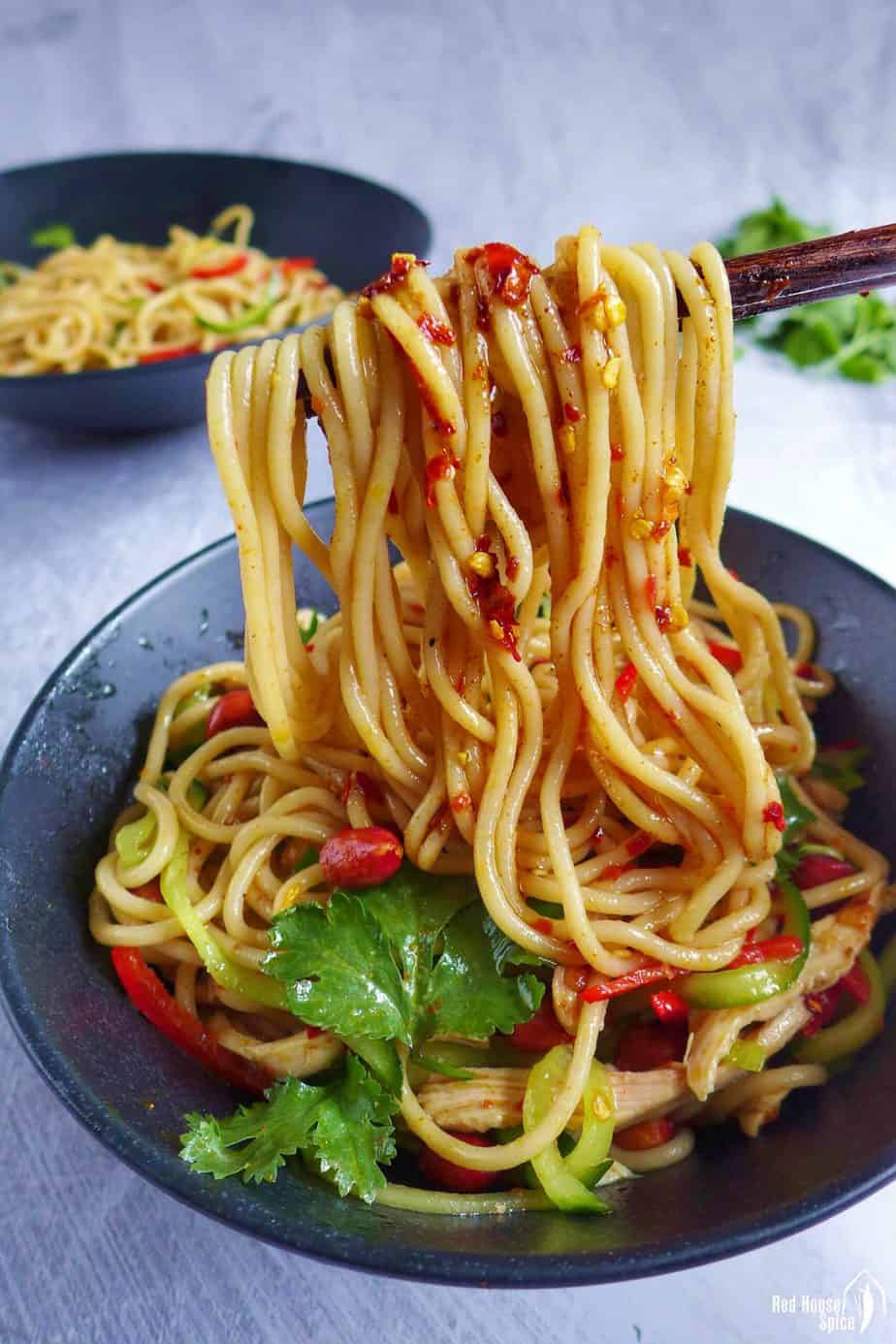
What are Chinese Cold Noodles
Chinese cold noodles, known as Liang Mian/凉面 in Chinese, are a traditional “small eat” (Xiao Chi/小吃) popular in many regions of China. At street stalls, small cafes or in households, it’s served as a snack or a quick breakfast/lunch. Among many versions, cold noodles with Sichuan dressing are one of my favourites. Pungent and super aromatic, it makes my tastebuds dance!
I make this dish regularly in our Red House, particularly during summer months when we crave all things refreshing. Funny enough, my son started his spicy food journey at the age of six when I served this dish for lunch and didn’t compromise with the spicy dressing. He found it too delicious to reject, so he made a big effort to tolerant the hotness and finished a whole bowlful (with a big glass of milk on the side to ease his burning mouth).
Summary of the cooking procedure
Firstly, let me summarise the cooking procedure involved in making Sichuan style cold noodles. I suggest you follow the sequence in order to complete the dish as quickly as possible.
- First, prepare the aromatic water. Leave it to infuse.
- Cook the chicken. Skip this step if you wish to make this dish vegetarian.
- While waiting, wash and cut cucumber, scallions, fresh chillies, coriander. Toast or fry peanuts if using.
- Start cooking the noodles when the chicken is done. Drain, then rinse to cool.
- Shred the chicken, then assemble the dish.
Be creative when choosing noodles
Most of the Chinese regional cold noodle dishes, such as Sesame Noodles, call for thin, round wheat flour-based noodles. Also, they usually contain alkaline agent thus look a little yellow and have a slippery, springy texture (see image below). Check out my recipe for Alkaline Noodles (aka Ramen Noodles) to learn how to make them at home.
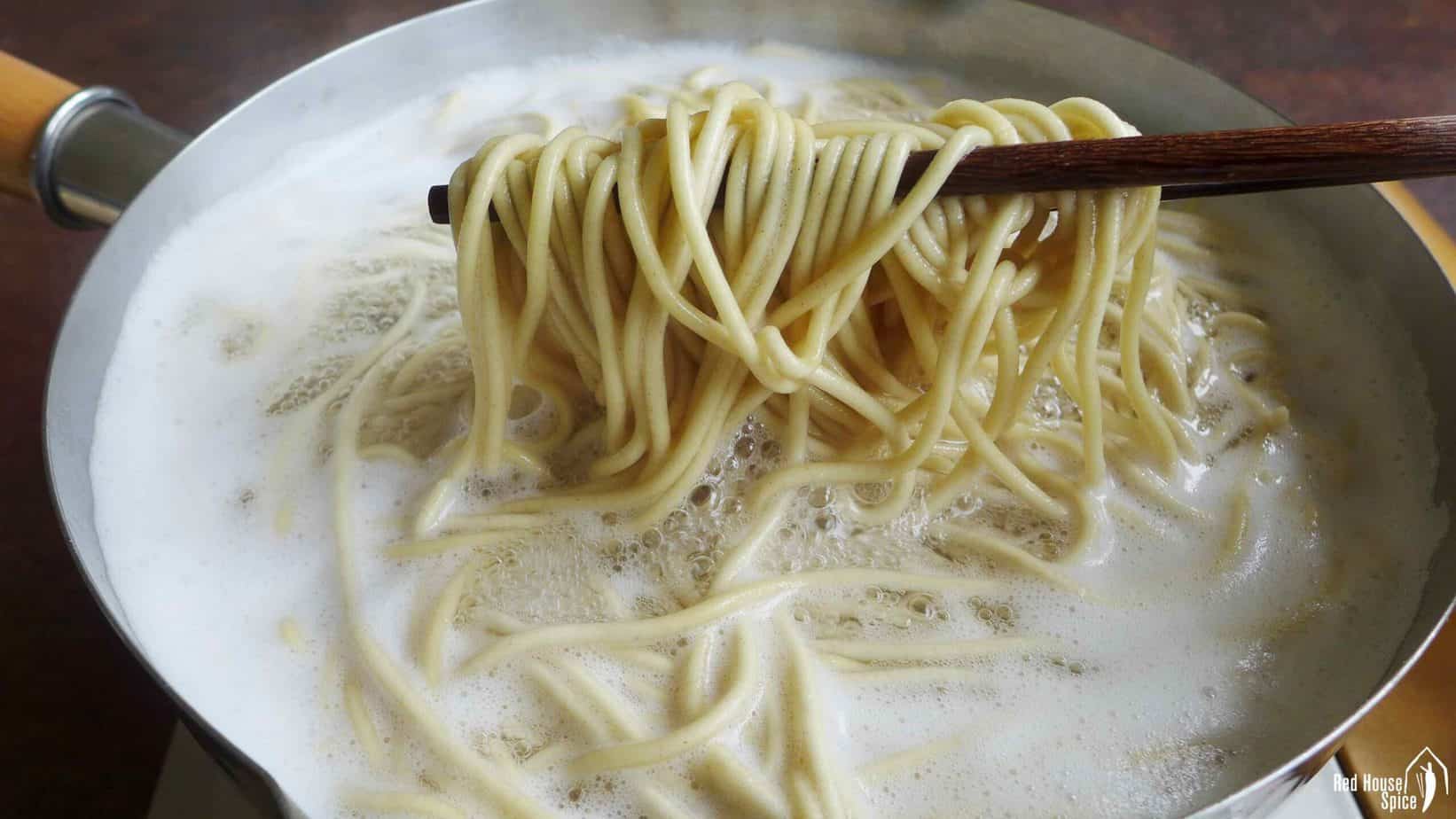
However, don’t limit yourself! Please feel free to choose other types of noodles. For example:
- Rice noodles which are gluten-free. Preferably round-shaped ones.
- Soba/buckwheat noodles which I use for my cold soba noodles in beef broth (延吉冷面)
- Spaghetti is great for this dish too. Although it’s a type of Italian pasta, it tastes great with Chinese dressing when served chilled.
- Another option is to use hand-pulled noodles. It’s simpler than what you’d imagine and super fun!
Do not overcook the noodles
Please pay attention not to overcook the noodles! This is very important for producing a refreshing bowl of cold noodles. You need to take out the noodles when they are just cooked, or a little undercooked (al dente). Rinse immediately under running water. Otherwise, the remaining heat of the noodles will cook them further. Then add some sesame oil and toss well. This will prevent the noodles from sticking or tangling.
Two ways to cook the chicken
Shredded chicken is a common topping for Chinese cold noodle dishes. Chicken thigh is my favourite cut for this dish. The boneless, skinless one is very handy. If you prefer, use chicken breast instead. It works fine too. For this recipe, I introduce two simple ways to cook it.
- Steaming. This is my preferred method as it takes a shorter time to cook and the cooked chicken stays moist.
- Roasting. Place the chicken in an ovenware then cover with tin foil. Cook in a preheated oven at 390°F/200°C/Fan 180°C.
When cool enough to touch, you may either shred it by hand or cut it with a knife.
How to make a Sichuan dressing
Now let’s talk about the Sichuan dressing which makes this cold noodle dish outstanding. The ingredient list may look a little long, but each one contributes to the great taste in its own way. Here are what you need:
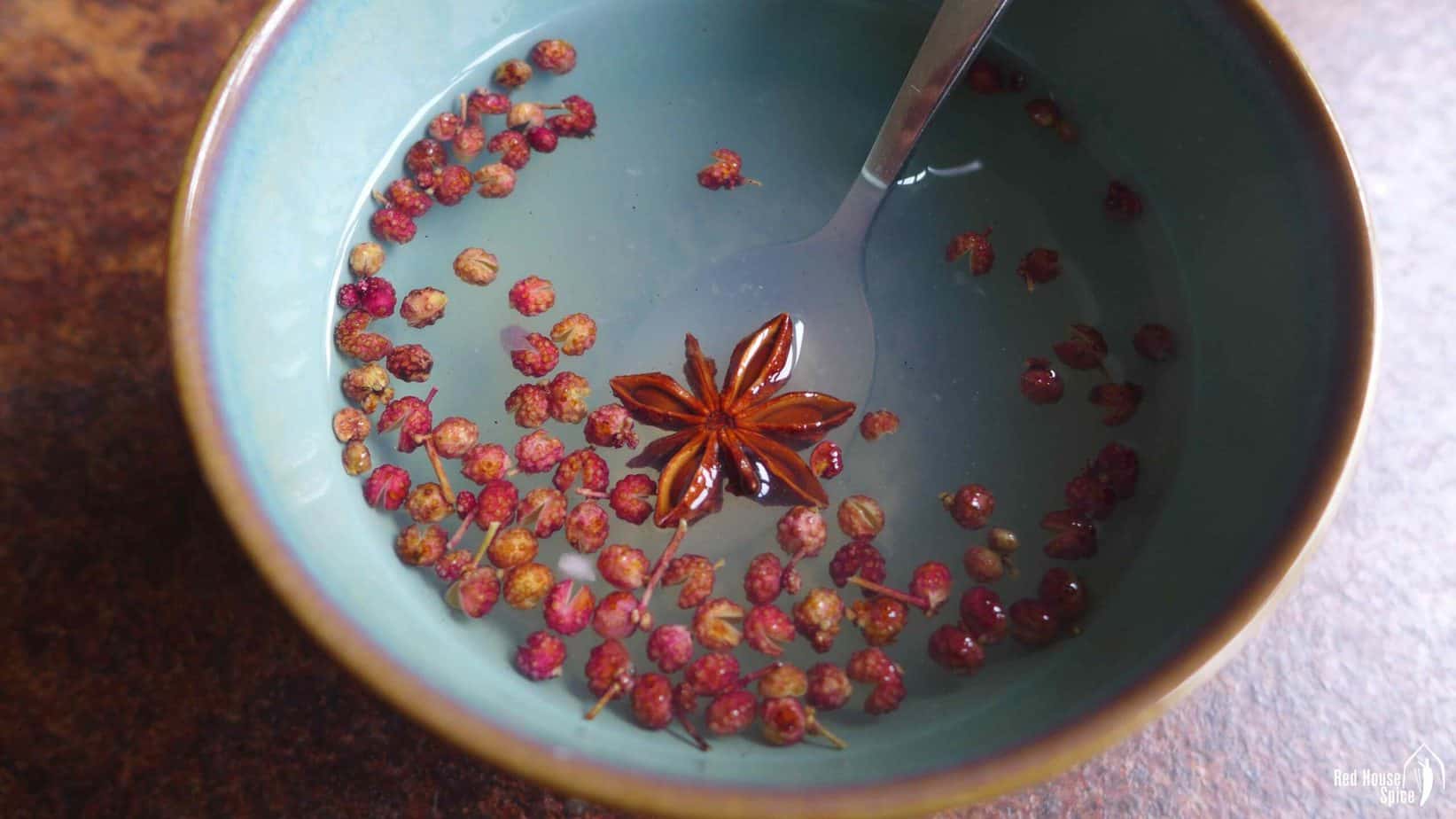
- The aromatic water (香料水): Simply use hot water to bring out the best flavour of Sichuan peppercorn, star anise and minced garlic (see image above). Leave it to infuse while preparing other ingredients. This type of spiced water is commonly used in Chinese cuisine, for dressing cold dishes, eg. Liang Pi (cold skin noodles), or for meat-based dumpling fillings.
- Light Soy sauce. If you aren’t tight on time, I highly recommend you make some Sichuan Spiced Sweet Soy Sauce (复制酱油) to replace regular soy sauce. It makes every noodle or dumpling dish outstanding. You can find the recipe in my post “Six Dumpling Sauces” (in the “Notes” section of the recipe card)
- Black rice vinegar. Some of my blog readers have asked “what can substitute Chinese black rice vinegar” or “Can I use balsamic vinegar instead”. Unfortunately, there aren’t any other types of vinegar that taste quite like it. I highly recommend you purchase one bottle if you’re keen to produce authentic Chinese food at home. It’s as essential as soy sauce even though not as well recognised.
- Sugar & salt. A little sugar is almost always added to Sichuan food. It balances the spiciness and increases the umami taste.
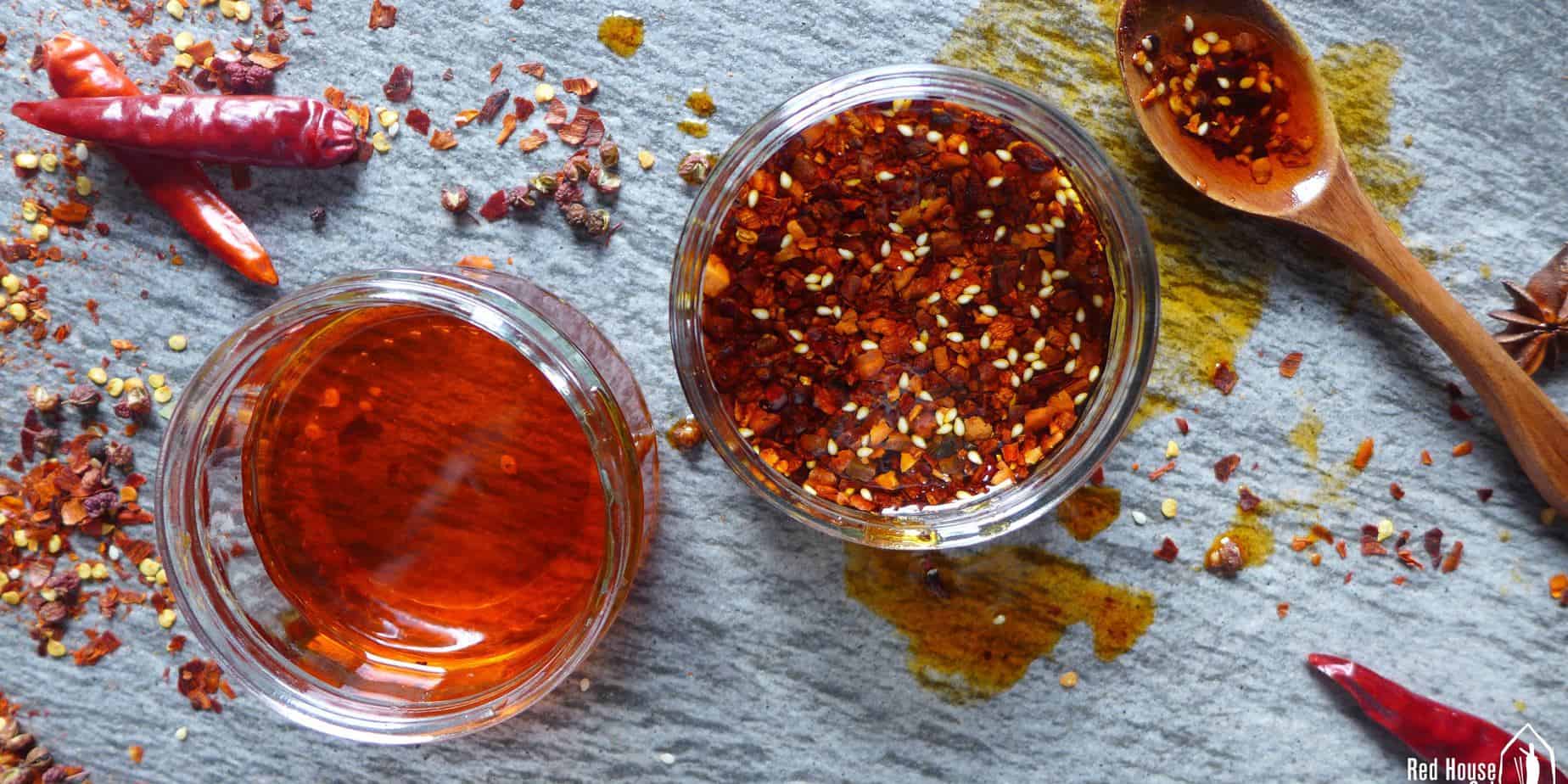
- Chinese chilli oil. I have a recipe and a tutorial video for this indispensable, versatile condiment. Check it out and make some!
- Sichuan pepper oil (花椒油/藤椒油). This is optional as I know it’s not yet widely available in shops outside China. But make sure you grab a bottle whenever you see it. A drop of Sichuan pepper oil works wonders. I promise!
Assemble the dish with tasty toppings
A delicious meal isn’t complete without some veggies. Cucumber is my favourite topping for this cold noodles with Sichuan dressing. Simply cut them into matchsticks and mix with the noodles. Scallions and coriander (cilantro) add another layer of flavour. Also, throw in some finely chopped fresh chillies if, like me, you love to brighten up your dishes with a hint of red.
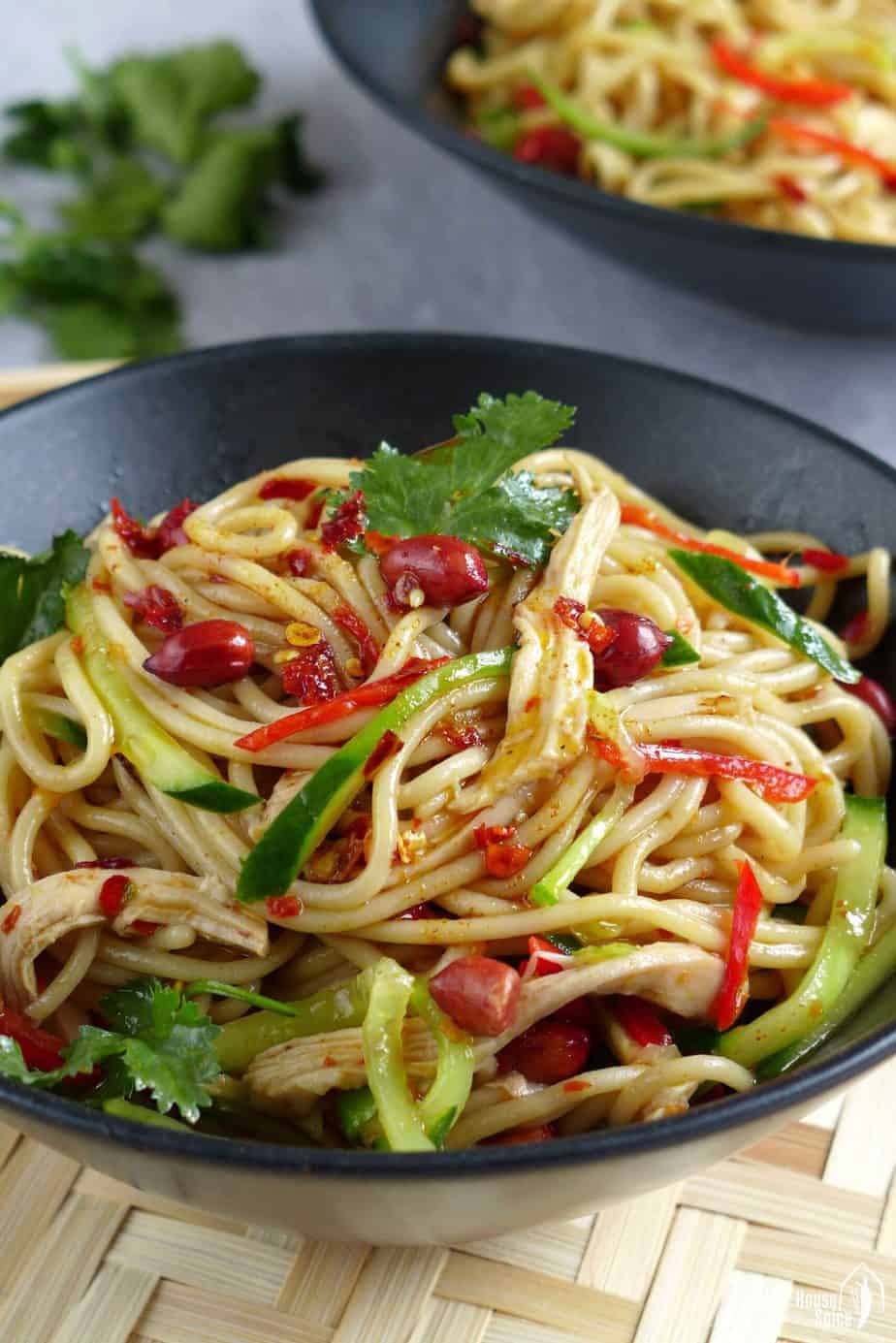
Finally, add some crunchy peanuts (or soybeans) to finish. They are a popular topping for many classic Chinese noodle dishes, for example, Dan Dan Noodles, Hot & Sour Glass Noodles Soup, etc. You may either toast them in a pan over low heat or fry them in oil (my post “Sichuan Spicy Peanuts” explains the frying procedure).
Make this dish vegetarian or vegan
Since chicken is not indispensable for this dish, you can simply skip it to make this cold noodle dish vegetarian or vegan. If you wish to have some protein to make it a more complete meal, here are my suggestions:
- Vegetarian option: Cook thin omelettes then cut them into strips. Check out my recipe for Chinese Style Spaghetti Salad to learn the simple cooking steps.
- Vegan options: Smoked or five-spice flavoured tofu is a great choice. It comes ready to eat so simply slice it up.
Other noodle recipes
I hope you liked the sound of this dish and feel inspired to give it a try. I have quite a few noodle recipes on the blog. Here are some example:

Cold Noodles With Sichuan Dressing (Liang Mian, 凉面)
Ingredients
For the aromatic water
- 1 teaspoon minced garlic
- 1 teaspoon Sichuan pepper
- 1 star anise
- 4 tablespoon hot water
For the chicken (see note 1 for vegetarian/vegan options)
- 1 chicken thigh, boneless & skinless - or 1 chicken breast, see note 2
For the noodles
- 2 portion noodles of your choice, see note 3
- 1 teaspoon sesame oil
For the dressing
- 1 tablespoon light soy sauce - or Sichuan spiced sweet soy sauce, see note 4
- 1 tablespoon black rice vinegar
- ½ teaspoon sugar
- Salt - to taste
- 2 tablespoon Chinese chilli oil - see note 5
- ¼ teaspoon Sichuan pepper oil - optional
For the toppings
- 150 g cucumber, cut into matchsticks
- 1 stalk scallions, finely chopped
- 2 fresh chilli, thinly sliced
- Coriander
- Toasted or fried peanuts - optional
Instructions
Prepare the aromatic water
- Put minced garlic, Sichuan pepper & star anise into a small bowl. Add hot water. Leave to infuse.
Cook the chicken
- Option 1: Put the chicken on a plate. Steam for 15 mins over medium heat. Transfer to another plate to cool.
- Option 2: Place the chicken in a roasting tray. Cover the tray with tin foil. Cook for 20 mins in a preheated oven at 390°F/200°C/Fan 180°C. Transfer to a plate to cool.
Boil the noodles
- Bring a pot of water to a full boil. Add noodles. Boil until they are just cooked or a little undercooked. Be attentive to avoid boiling over.
- Drain the noodles. Rinse under tap water to cool.
- Transfer to a large bowl. Add sesame oil. Toss well.
Assemble the dish
- Shred the chicken either by hand or with a knife. Add to the noodles along with cucumber, scallions and fresh chilli.
- Drain the aromatic water through a sieve. Discard the garlic & spices. Pour the water over the noodles. Add all the ingredients for the dressing and mix well.
- Transfer the noodles to 2 serving bowls. Top each one with coriander, peanuts (if using).
NOTES
- To make the dish vegetarian/vegan: You may replace the chicken with thin, sliced omelette or smoked/five-spice flavoured tofu.
- If using a large chicken breast. Halve it lengthways then cook as instructed above.
- You may use any type of noodles that are round-shaped: regular wheat noodles, alkaline noodles, rice noodles, soba noodles, or even spaghetti!
- Please refer to my post “Six Dumpling Sauces” to learn how to make Sichuan spiced sweet soy sauce (复制酱油), a tasty, versatile condiment that can be stored for a long time. If using it, you can skip the sugar in the ingredient list.
- I have a detailed guide on “Homemade Chinese Chilli Oil”. I highly recommend you make it instead of using a shop-bought version. It can be used for many Chinese dishes, such as dumplings, noodles, appetisers, etc.
NUTRITION
NUTRITION DISCLOSURE: Nutritional information on this website is provided as a courtesy to readers. It should be considered estimates. Please use your own brand nutritional values or your preferred nutrition calculator to double check against our estimates.




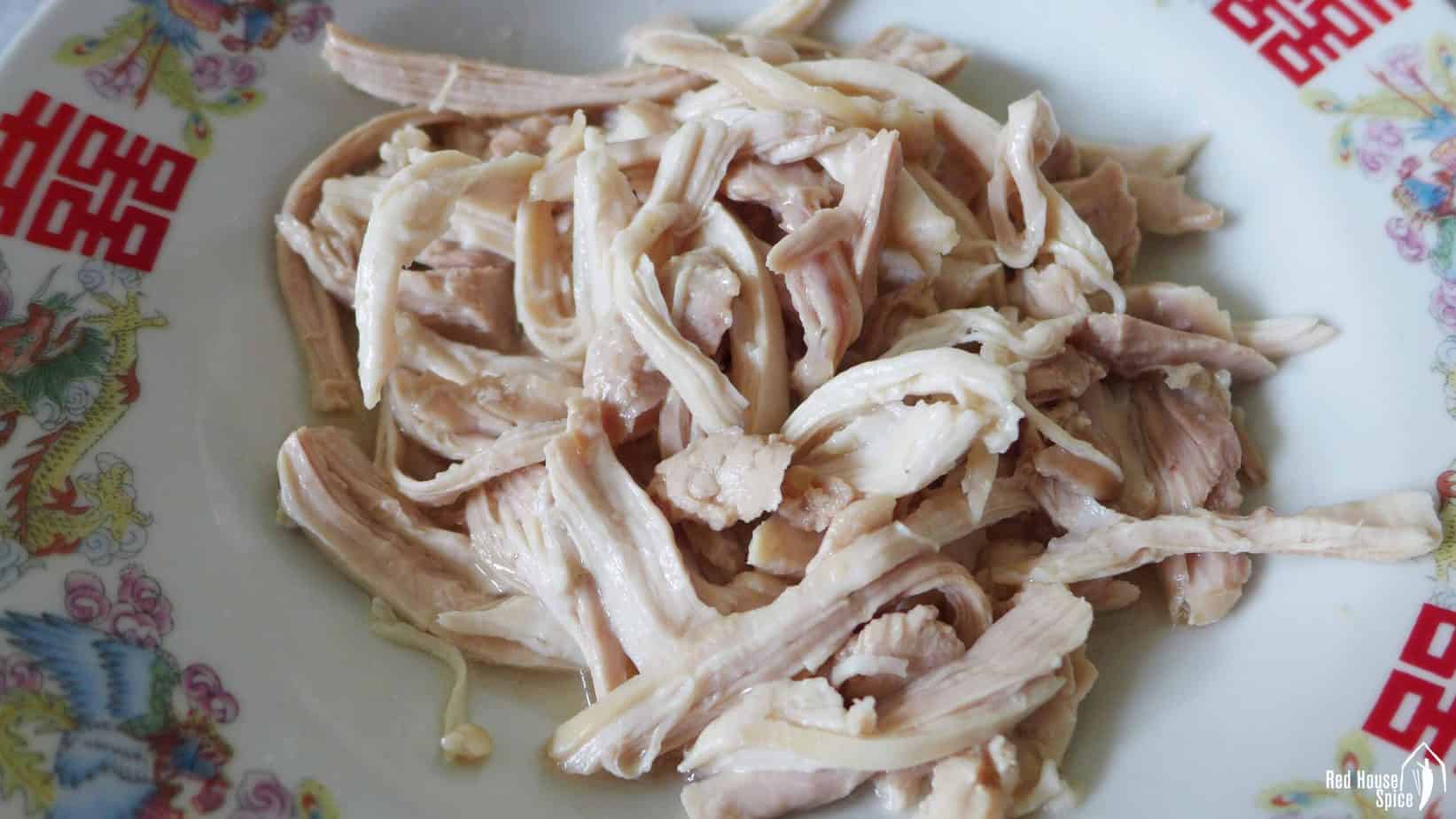
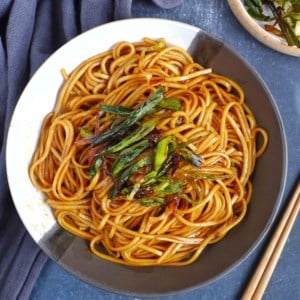

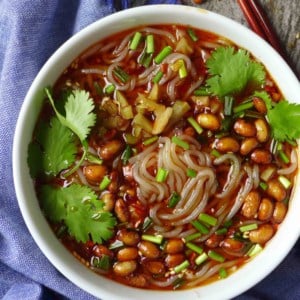
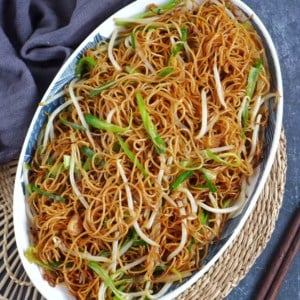
Absolutely loved this dish. It’s so delicious and easy to prepare – will definitely become a staple for us!
I love this recipe but no surprise since all your recipes that we have made are really good to excellent. Like a review I read, it’s hot and we didn’t want to cook. Did the chicken sous vide. Definitely a keeper!!
These days we’re having this dish very often too. Glad you liked it!
It was serendipity that I saw your post on Instagram for this dish. It is a hot day and I did not feel like cooking. Since I had a rotisserie chicken in the fridge I thought it would be perfect to try out this recipe. It did not disappoint. Thank you!
Very happy to hear that Shirley! It’s indeed a perfect dish for hot days.